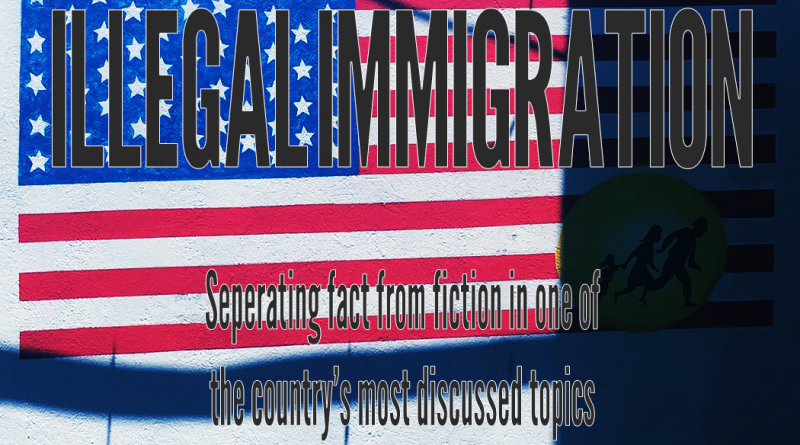Opinion: Illegal Immigration, Separating Truth from “Untruth” Part One
![]() Sean Newhouse
Sean Newhouse
News Editor
Due to the continuing national discussion over illegal immigration in the U.S., the need for fact-checked and accurate information is more important than ever. This three part article series seeks to correct, clarify and contextualize some of the most popular misleading statements on the subject.
- Why do individuals attempt to illegally immigrate to the U.S.?
Unauthorized migrants typically come to the U.S. either because of a lack of economic opportunity in their home country or because of violence and insecurity caused by criminal groups or state security forces.
For instance, Michael Clemens of the Center for Global Development found from 2011 to 2016, across Honduras, Guatemala and El Salvador, “each additional homicide per city associated with nearly four more unaccompanied minors caught at the U.S. border.”
Likewise, illegal immigrants from these three Central American countries are taking up a greater proportion of unauthorized migrants to the U.S. It’s worth noting each of these countries experienced U.S. interference in the latter half of the 20th century that can be associated with instability occurring today.
In Guatemala, for example, a CIA-backed coup in the 1950s overthrew Guatemala’s democratically-elected government in favor of one more supportive of U.S. interests. This coup then led to a decades-long civil war in the country.
- Why can’t illegal immigrants enter the U.S. legally?
An individual can immigrate to the U.S. for three reasons: employment, family, humanitarian protection. These routes aren’t available to many unauthorized immigrants.
Poverty, itself, is not a qualifier for refugee or asylee status. Additionally, applicants can wait years or even decades to be granted legal entrance to the U.S.
On top of this, Attorney General Jeff Sessions made it more difficult for asylum seekers to immigrate to the U.S. On June 11, he ordered immigration judges to immediately cease granting asylum to victims of domestic abuse and gang violence.
&’ async type=’text/javascript’>&’ async type=’text/javascript’>&’ async type=’text/javascript’>&’ async type=’text/javascript’>&’ async type=’text/javascript’>&’ async type=’text/javascript’>&’ async type=’text/javascript’>&’ async type=’text/javascript’>&’ async type=’text/javascript’>&’ async type=’text/javascript’>&’ async type=’text/javascript’>&’ async type=’text/javascript’>&’ async type=’text/javascript’>&’ async type=’text/javascript’>&’ async type=’text/javascript’>
In Other ✈ news…
>>NBA Free Agency Column: The King Lands in LA
>>UD Ends Sponsorship of “Dayton 2 Daytona” But Tradition Will Continue
>>Contributing Writer Shares Tips and Tricks to Navigate Dayton’s Hidden Gem: 2nd Street Market
His rationale was the inability of these applicant’s home governments to protect their citizens from violence by non-state actors “cannot itself establish an asylum claim.”
These are some reasons why people will risk traveling through a deadly dessert to illegally immigrate to the U.S. instead of making an asylum claim at a port of entry.
- How many unauthorized immigrants are there, and who are they?
PEW estimates there were 11 million unauthorized immigrants in the U.S. in 2015. They account for five percent of the U.S. civilian workforce, most in farming and construction.
Sixty-six percent of unauthorized adults have lived in the U.S. for at least a decade.
- Are illegal immigrants eligible for government benefits?
While many unauthorized immigrants pay taxes, most are not eligible for government benefits such as Medicaid, Social Security and food stamps.
To read Part Two of this three part series, click here.
&’ async type=’text/javascript’>&’ async type=’text/javascript’>&’ async type=’text/javascript’>&’ async type=’text/javascript’>&’ async type=’text/javascript’>&’ async type=’text/javascript’>&’ async type=’text/javascript’>&’ async type=’text/javascript’>&’ async type=’text/javascript’>&’ async type=’text/javascript’>&’ async type=’text/javascript’>&’ async type=’text/javascript’>&’ async type=’text/javascript’>&’ async type=’text/javascript’>&’ async type=’text/javascript’>
Cover photo courtesy of Mary McLoughlin//Opinions Editor and Peter Kolb//Print Editor.


